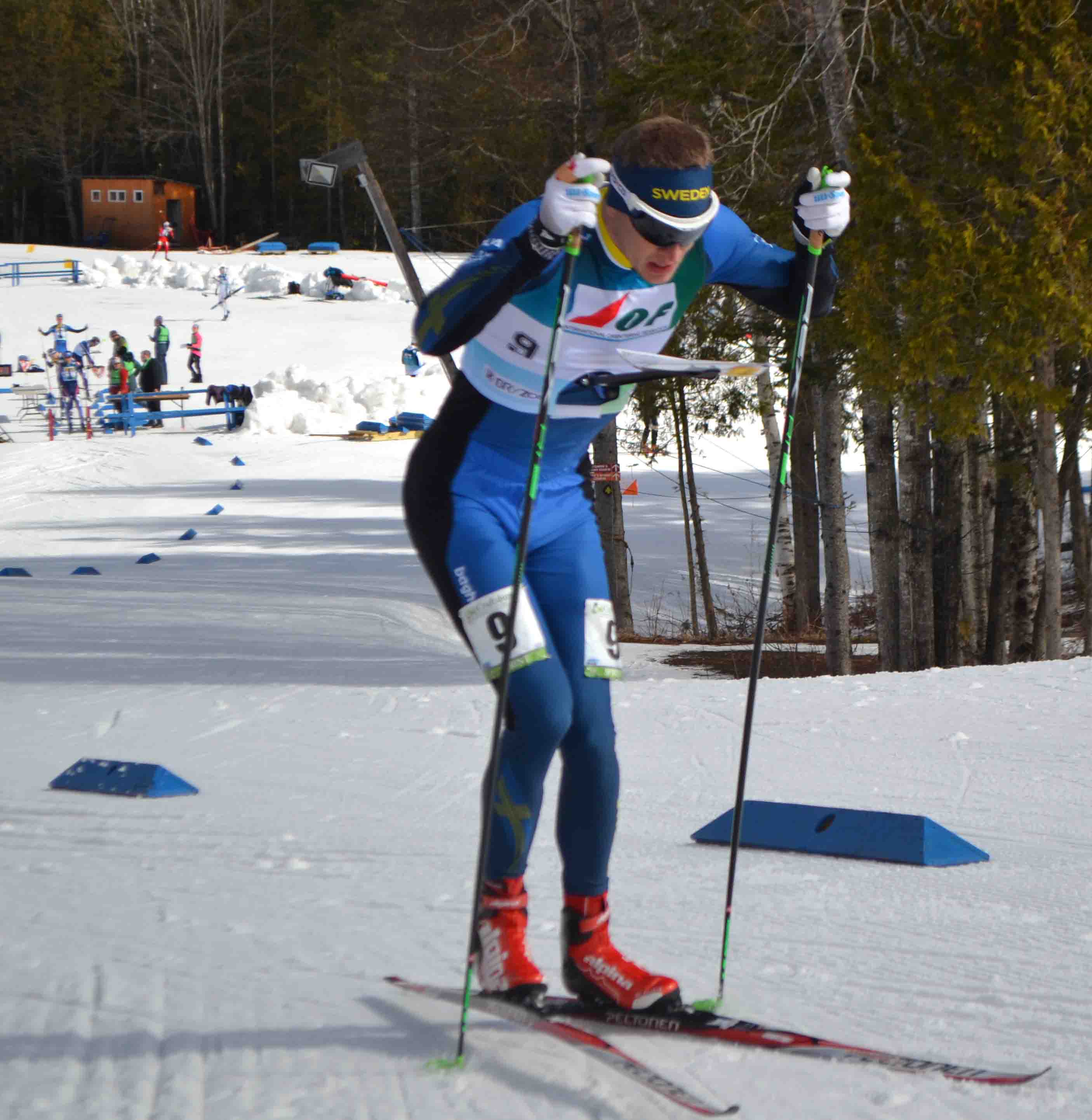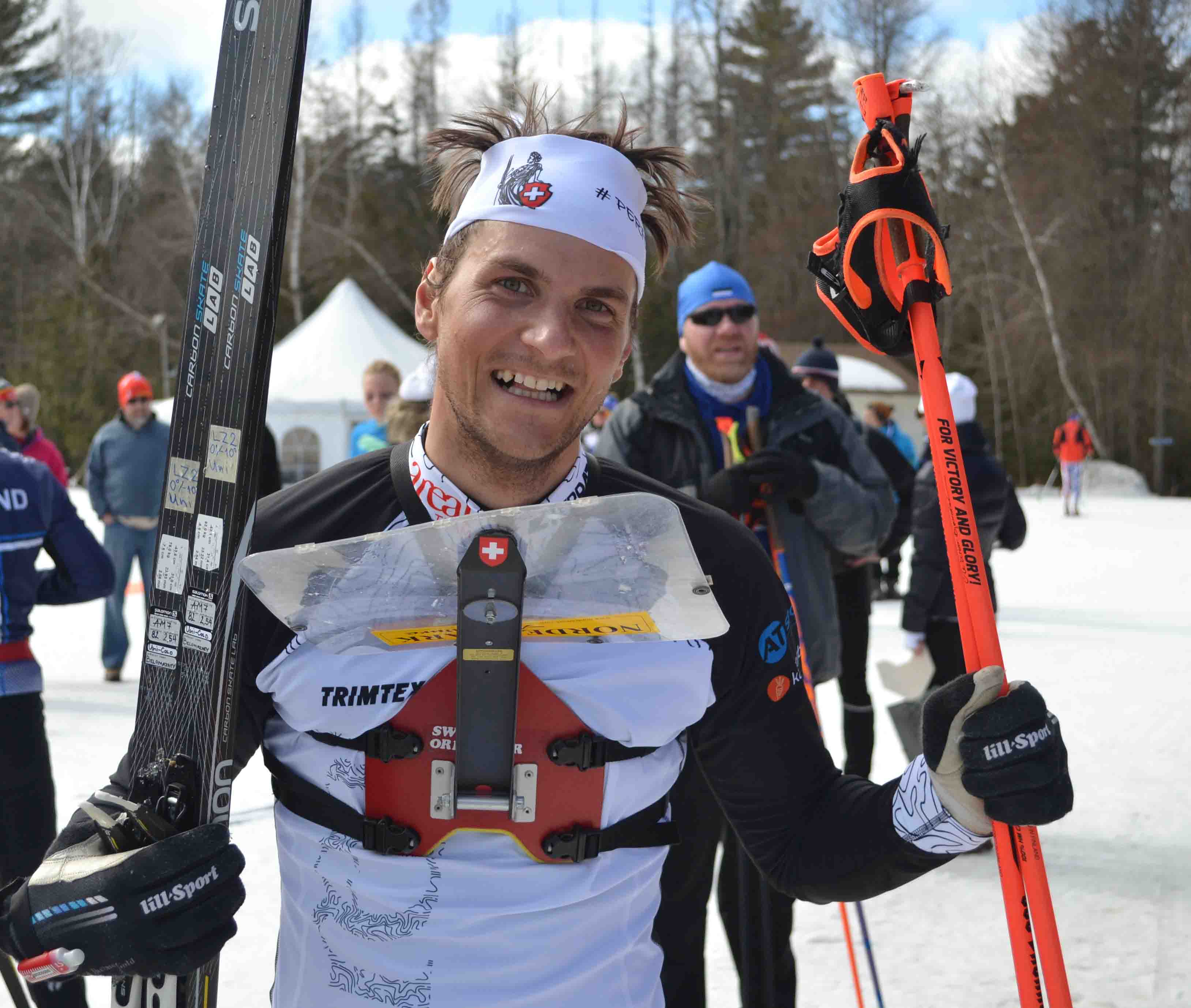
CRAFTSBURY, Vermont — This week, the Craftsbury Outdoor Center is hosting the final three races of the 2018 Ski Orienteering World Cup as well as Ski Orienteering World Masters Championships. In addition to flocking from all over the United States, athletes have traveled from Bulgaria, Canada, Taiwan, Czech Republic, Estonia, Finland, Germany, Italy, Norway, Romania, Russia, Sweden, and Switzerland for this event.
For those FasterSkier readers worried about cross-country skiing being unknown here in the U.S., it is a safe bet “Ski-O” is orders of magnitude even more obscure.

Simply put, Ski-O is a race combining navigation and cross-country skiing. The route is up to the competitor and route choice is a big part of winning races. Just 15 seconds before they push through the wand to start their race, each athlete is given a map containing control points (used to determine distance). Most races are individual start, but there are mass start events, too (although none will be held in Craftsbury).
The skill is using a trail network to travel as fast as possible from control to control, which must be taken in a specified order. Race distances are given as control to control in a straight line and actual distance traveled is longer due to the circuitous nature of ski trails. Adding a bit of fun to the mix, not all travel is on wide, groomed trails. Athletes are free to travel off trail if they believe it is the quickest way to the next control.
The organizers prepare trails full enough for two athletes to skate alongside each other (depicted as a solid green line on the map), narrow but almost skate-able (dashed green line), or single track (dotted green line) which is pretty much a hiking trail that a skier can double poled to navigate.
The map also contains topographical information and navigable features such as buildings, cliffs, fields, fences, and just about anything which can be identified when covered with snow.

Each skier wears a map holder which can pivot in the center allowing the athlete to orient the map if they so choose. This device also allows the skier to read the map while in motion.
Route choices are made on the basis of the quality of the ski tracks, gradient and distance, all of which can be read from the map. Each athlete decides if it is quicker to ski wide trails and travel farther while going faster, or take the shortest route through the woods while moving at a lower rate of speed. It might also be quicker to abandon mapped trails altogether and strike out through the woods.
Watching these athletes move through the woods is impressive. They travel off-trail and successfully negotiate terrain most alpine skiers would hesitate to try. There is very little slowing down, leaving a wide trail for a bit of single track. In comparison with the more well-known cross-country skiing, ski orienteers are faster on technically challenging, narrow, soft tracks.

There are a few equipment modifications for ski-o. Pole baskets are significantly larger and skis are a bit shorter than what’s used on firm groomed tracks. Skating is preferred and some competitors carry a compass. To verify finding a control, an electronic chip (looks like a thumb drive) is time stamped when the athlete passes the chip across a device which looks like a cellphone. At the end of the race the chip is downloaded to calculate the total course time. Distance is not measured. The fastest athlete to collect all controls in the specified order and complete the course is the winner.
The World Cup sprint has a point-to-point distance for the men of 3.4 kilometers, and the best distance by trail is 4.4 k. The women’s race has a point-to-point of 3 k and trail distance of 3.7 k. The men have 11 controls and the women have nine. The expected winning time for both races is 13 minutes.
On the other end of the spectrum, a long-distance event is advertised point-to-point as 24 k for the men and 18 k for the women. Both have an expected winning times of roughly 90 minutes.
At the end of the World Cup week, FasterSkier will post a short report on the races.
Here are the top-five results of Tuesday’s World Cup sprint:

Men
- Andrey Lamov (Russia) 12:47.7
- Audun Heimdal (Norway) 13:16.0
- Jorgen Madslien (Norway) 13:16.7
- Eduard Khrennikov (Russia) 13:26.5
- Misa Tuomala (Finland) 13:29.3
Women
- Tove Alexandersson (Sweden) 11:37.5
- Mariya Kechkina (Russia) 12:32.1
- Salla Koskela (Finland) 12:35.2
- Magdalena Olsson (Sweden) 12:36.6
- Marjut Turunen (Finland) 12:35.8
- 2018 Ski Orienteering World Cup
- 2018 Ski Orienteering World Masters Championships
- Andrey Lamov
- Craftsbury
- Craftsbury Outdoor Center
- Kevin Brooker
- Ski Orienteering
- Ski Orienteering Masters Worlds Championships
- Ski Orienteering World Cup
- Ski Orienteering World Masters Championships
- ski orienteers
- Tove Alexandersson



